The anatomy of puzzle creation in Escape Goat 2
Indie puzzle development from start to finish
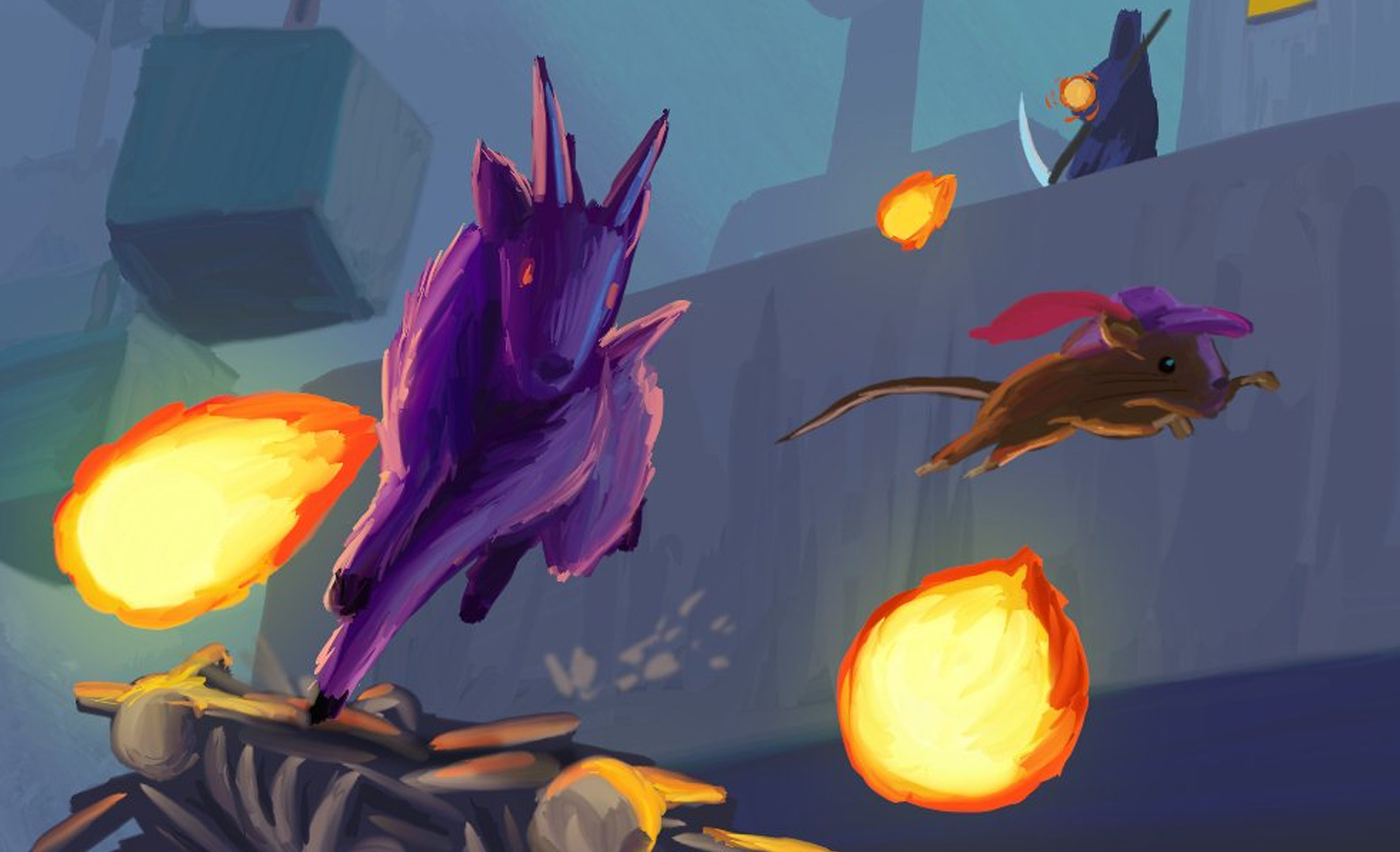
Brain-teasing 101
How on earth does one design a puzzle? Great puzzles are what define some of the best games ever made--the logic problems of Portal, Braid, and Limbo keep you engaged from start to finish, making you feel like a genius for finally solving a mind-bending problem. It's a delicate balancing act: make the puzzles too easy, and players will lazily coast through your content. Too difficult, and you risk frustrating gamers to the point that they simply give up.
Ian Stocker knows a thing or two about puzzle creation. As the mind behind the excellent puzzle platformer Escape Goat, Stocker had to craft rooms that would test the player's reasoning just as much as their reflexes. Now he's making the finishing touches on Escape Goat 2, which will see the return of our favorite purple goat and his magical-hat-wearing mouse sidekick. To find out more about how the game's puzzles came to be, we asked Stocker to give us a step-by-step breakdown of the process, from blank canvas to finished level. Take it away, Ian
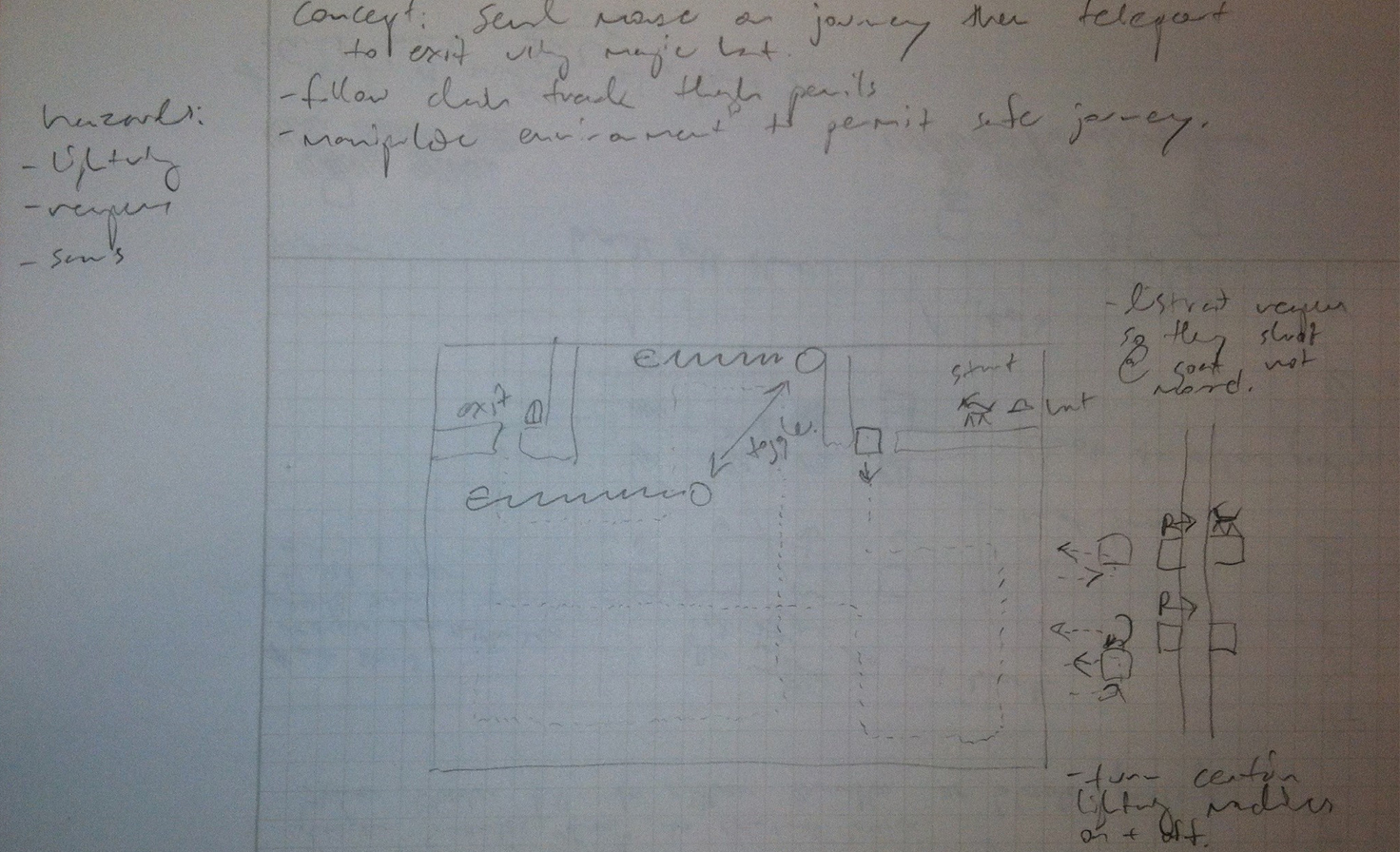
Perilous Journey for the Mouse, Step 1
"The mouse companion is an integral part to nearly all puzzles in Escape Goat 2. You can deploy him at any time to climb up walls, distract enemies, or press switches, among other things. Hes smaller than the goat, so he can fit in a half-tile-sized space. The coolest thing the mouse can do involves the Magic Hat. When you obtain this power-up, you can swap places between the goat and the mouse, like a teleporter. Thus, anywhere the mouse can get to, the goat can eventually get there as well.
"In this level, I want to have the mouse go on a little adventure along a track, brushing him by lots of deadly obstacles along the way. Itll be up to the player to keep him safe by operating machinery and distracting the enemies. Once he reaches the other side, the player can swap the goat and mouse, and reach the exit with the goat."
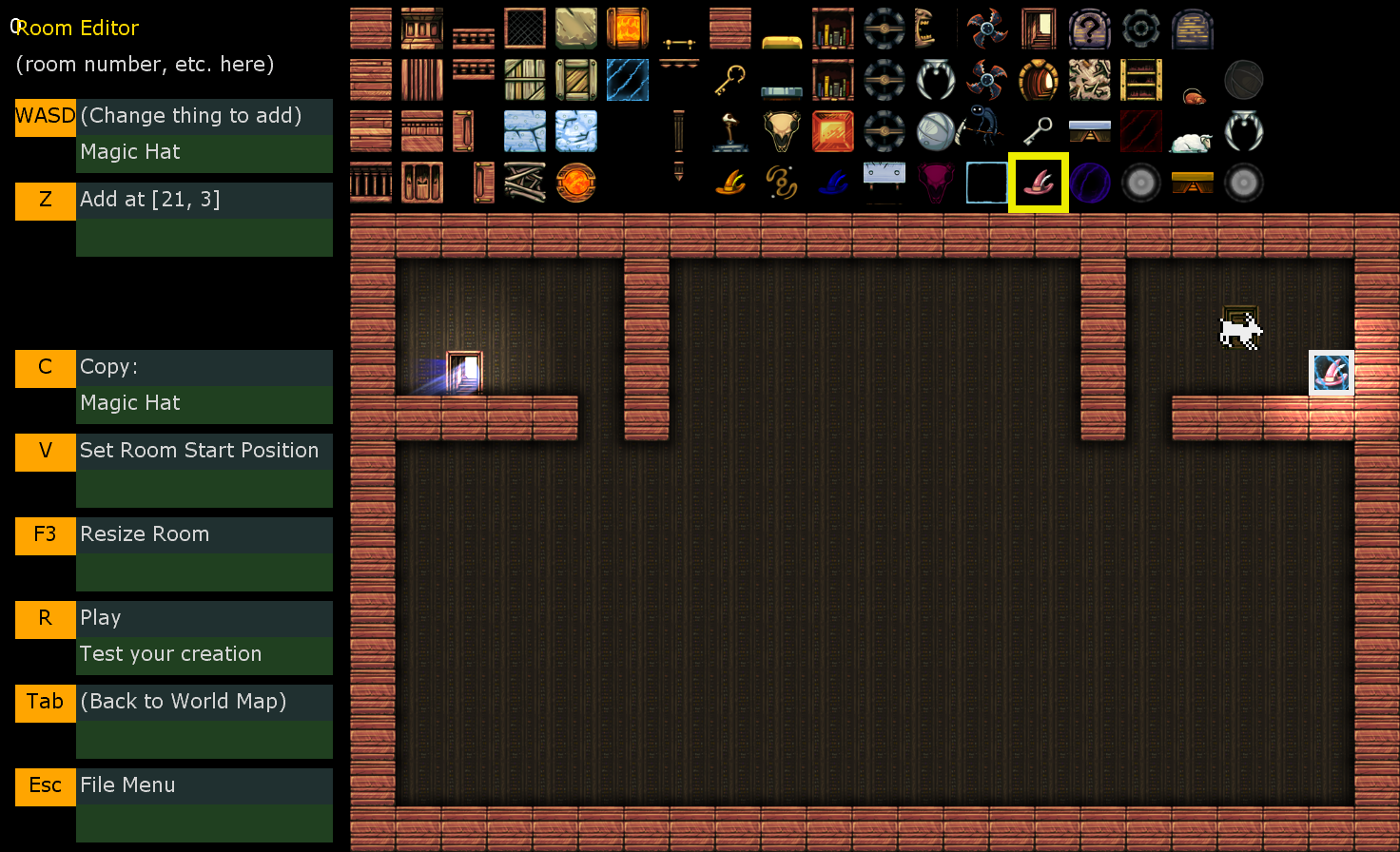
Step 2
"This is the Escape Goat 2 level editor. Its not very pretty yet, but it gets the job done. All rooms start as empty space enclosed by walls on all four sides. Ill start with the entrance and exit points. The player starts on the right; the exit is on the left. Im giving the player the Magic Hat right at the start."
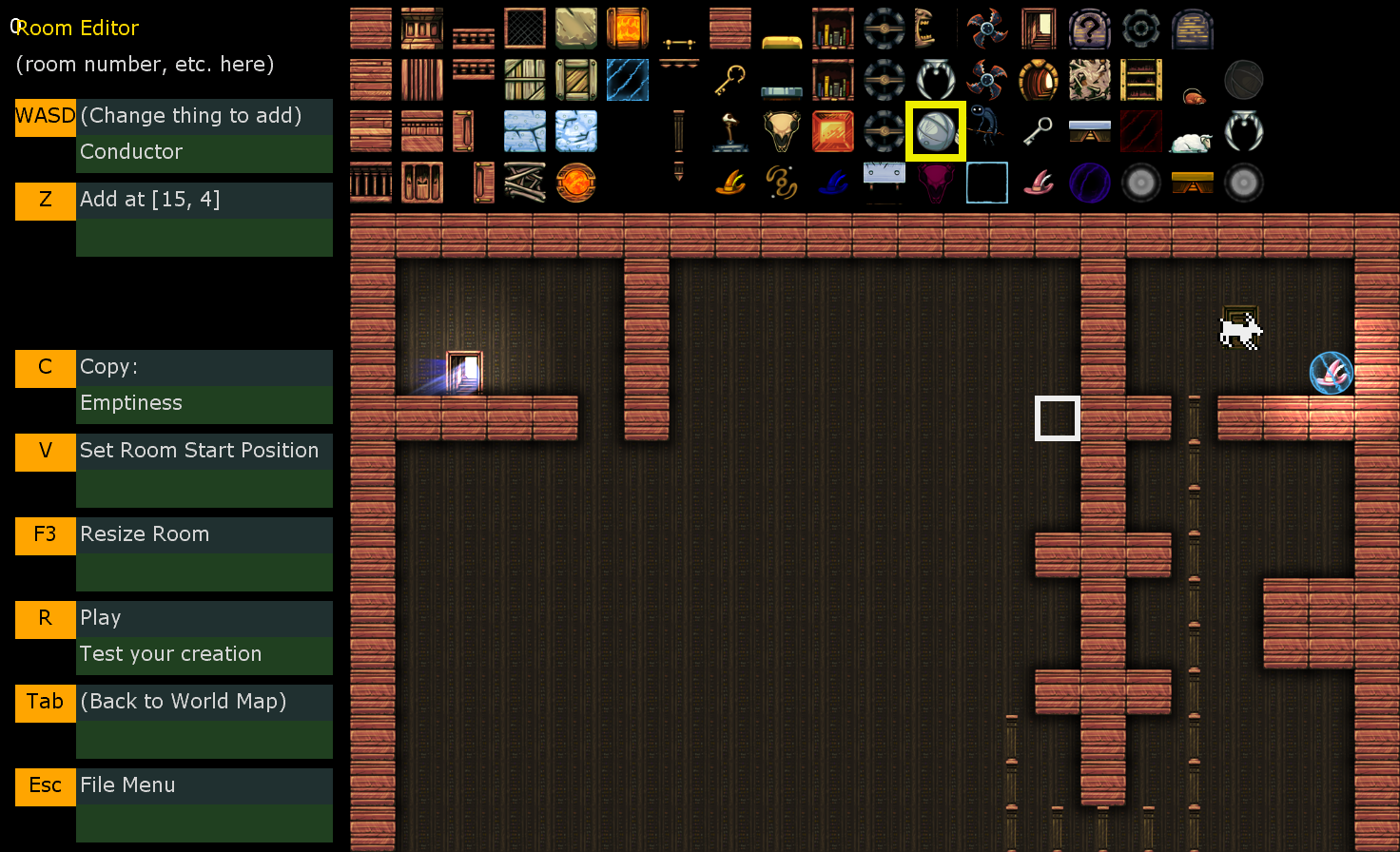
Step 3
"Ive built a wall blocking access to the center of the room, and placed some tiles where I want the elevator track to go."
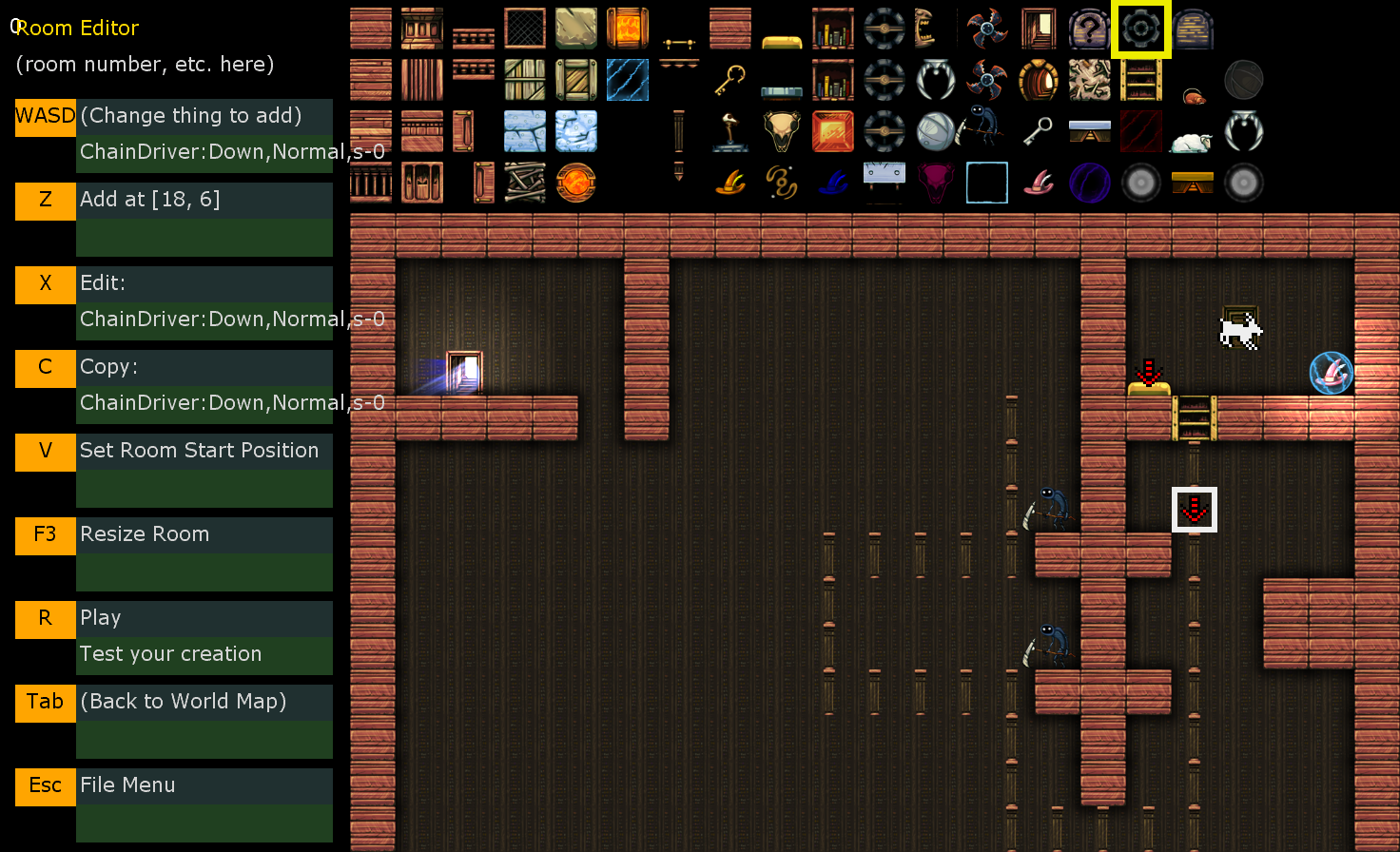
Step 4
"The first peril is a pair of Reapers [cloaked fireball blasters] waiting just on the other side of the wall. The track will move horizontally near them, so they will have plenty of opportunity to take out the mouse, provided the player doesnt use the goat to distract them."
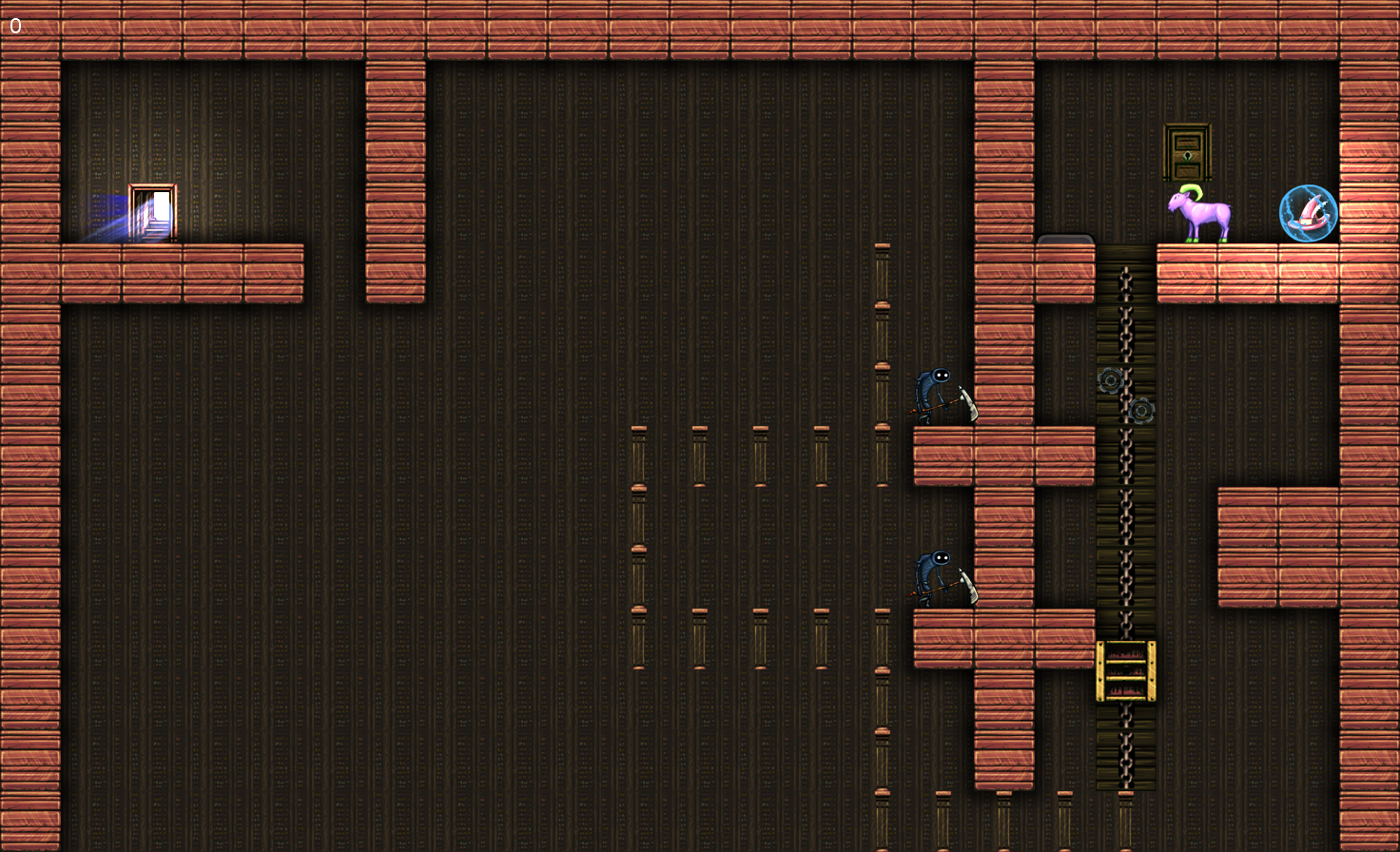
Step 5
"Ive built the first segment of the chain track and placed a moving car on it. Seems to be working properly."
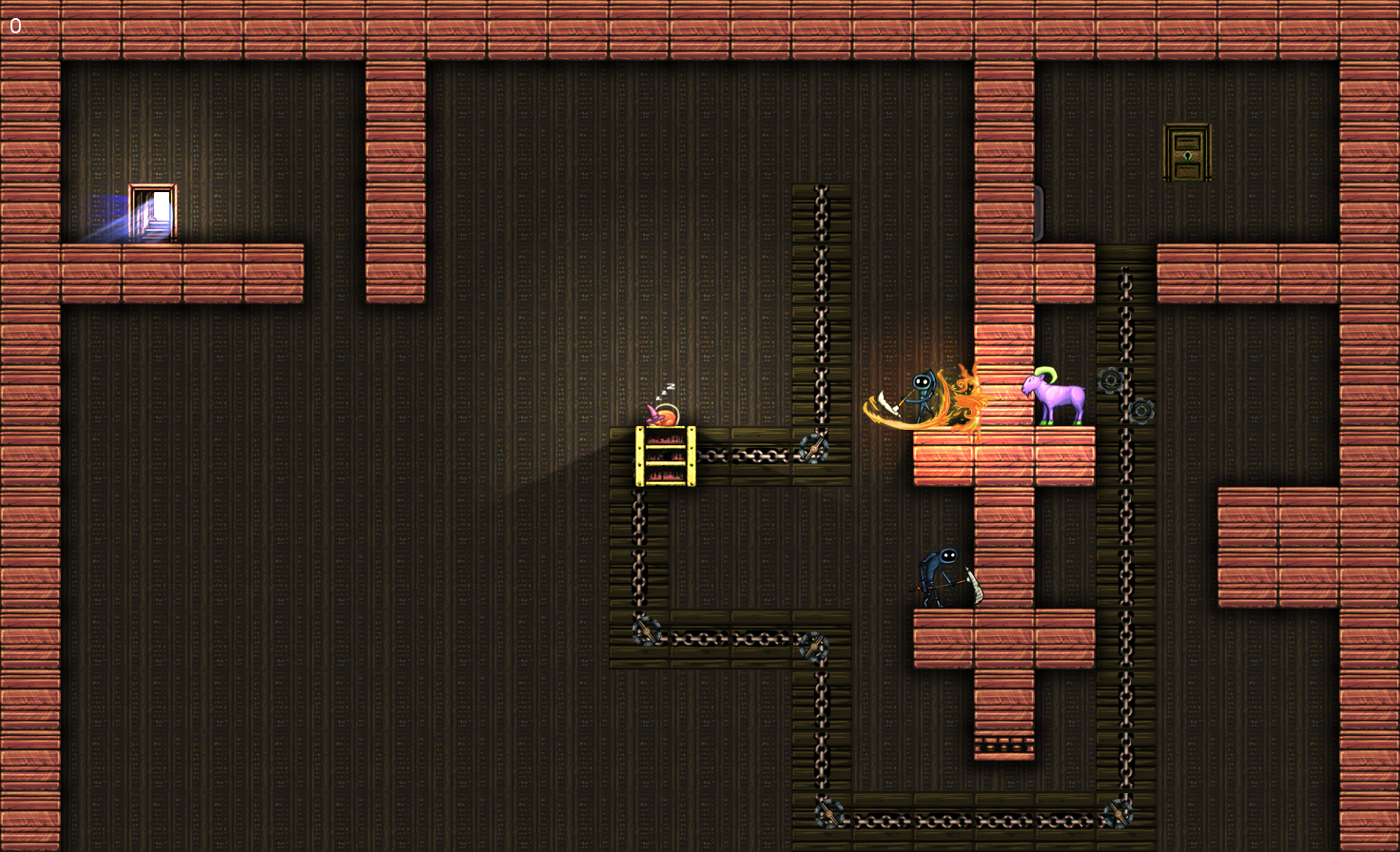
Step 6
"Another quick test run: Ive built the next segment of the chain track, and the Reaper is trying to hit the goat through the wall, ignoring the mouse to the left, just as planned. If the goat doesnt stand on the same plane, the Reaper will see the mouse first and attack him instead."
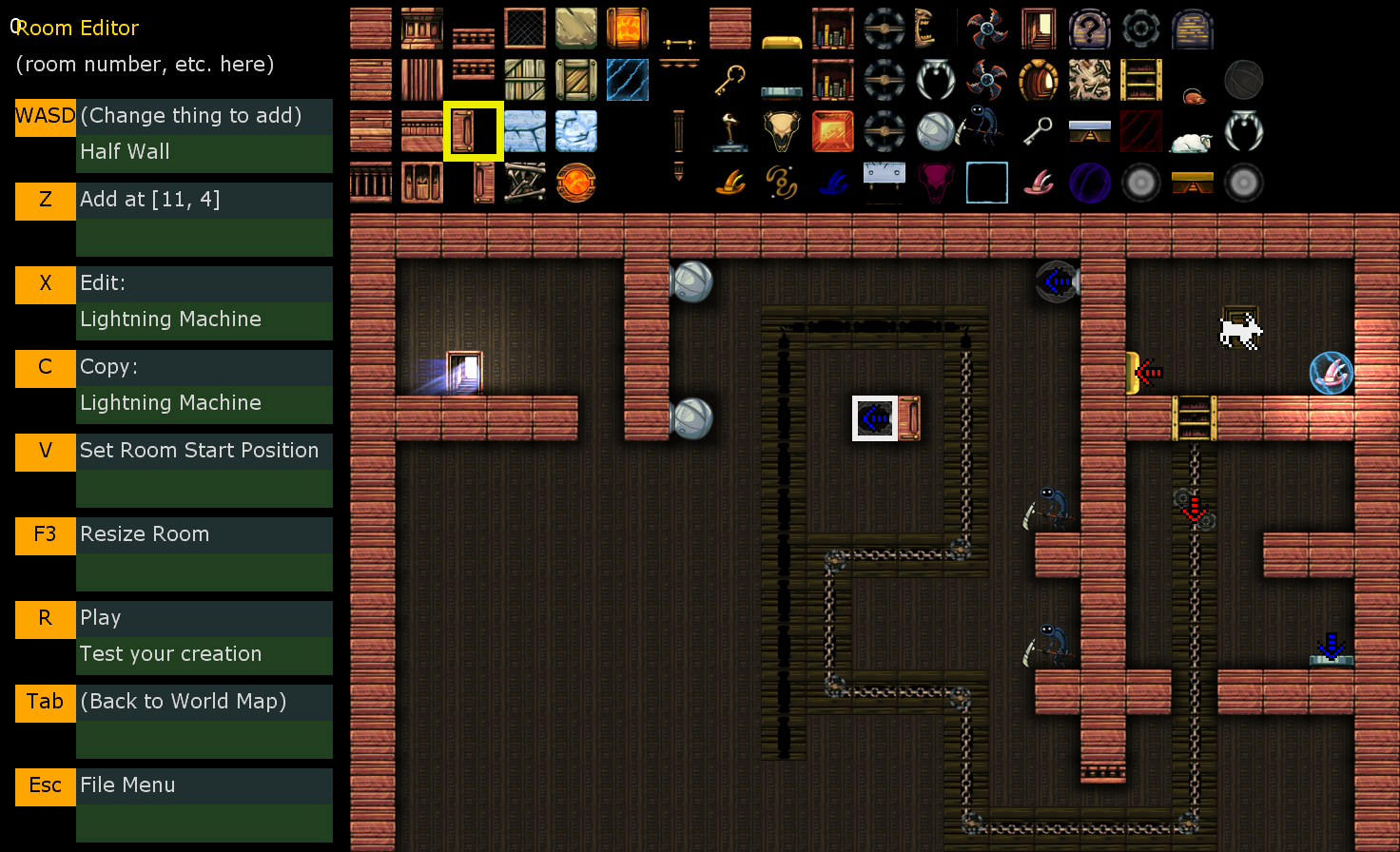
Step 7
"Now adding some more perils to the room. These are lightning machines, which create a deadly arc of electricity between the electrode and conductor. The two lightning machines can be toggled with the blue switch on the bottom right."
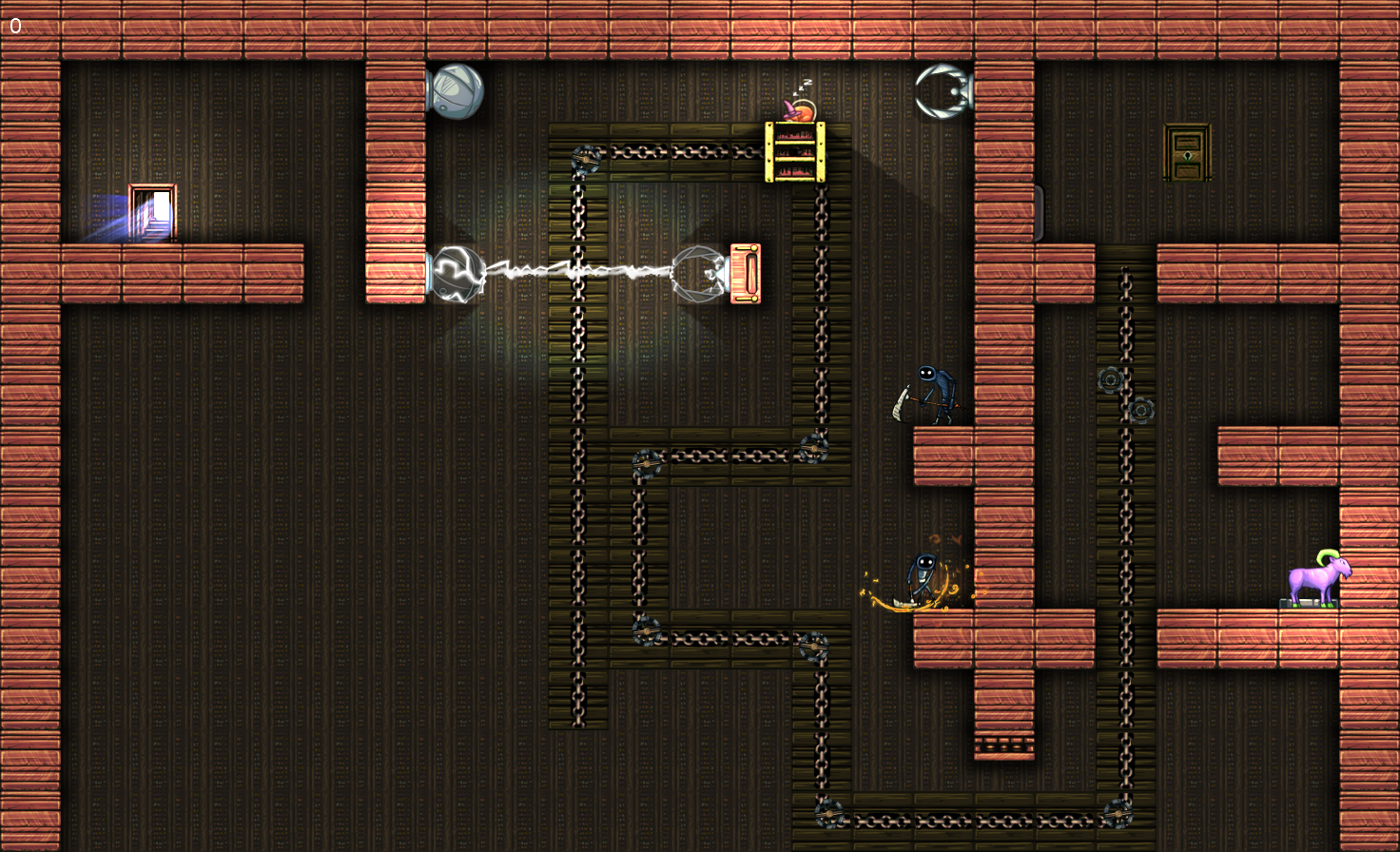
Step 8
"A test run: With the goat on the switch, power surges from the top lightning machine to the bottom one, allowing the mouse to safely pass by. Hell have to step off the switch in a moment, though, to switch power back to the top machine."
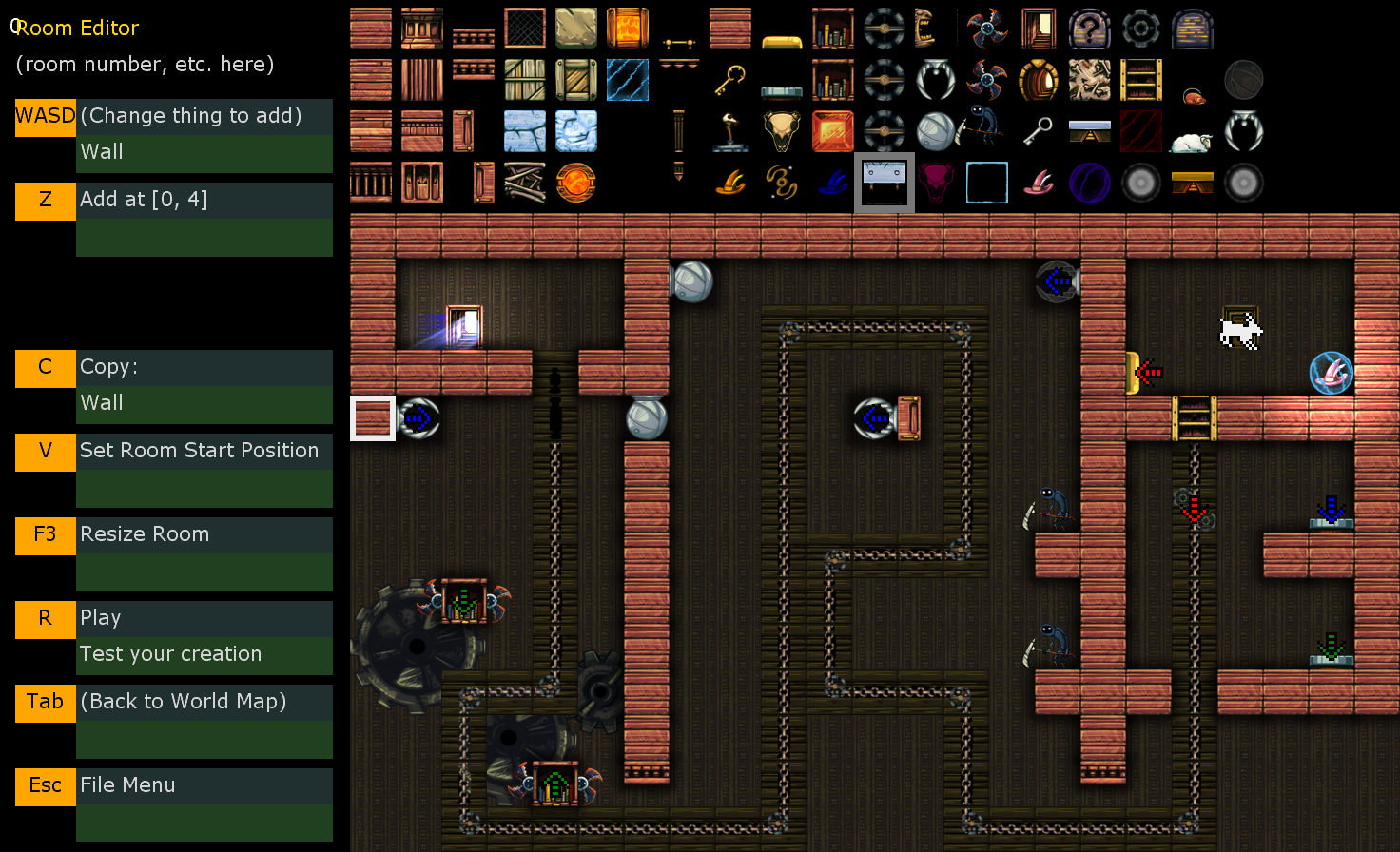
Step 9
"Time to add the final section of hazards. This time itll be spinning saw blades attached to movable blocks. I added another switch to the bottom right which will move the blocks up and down. Just like before, youll have to step on and off the switch at the right moment to keep the mouse safe. I moved the floor to the exit room up just one tile so I could fit a final lightning machine in at the end."
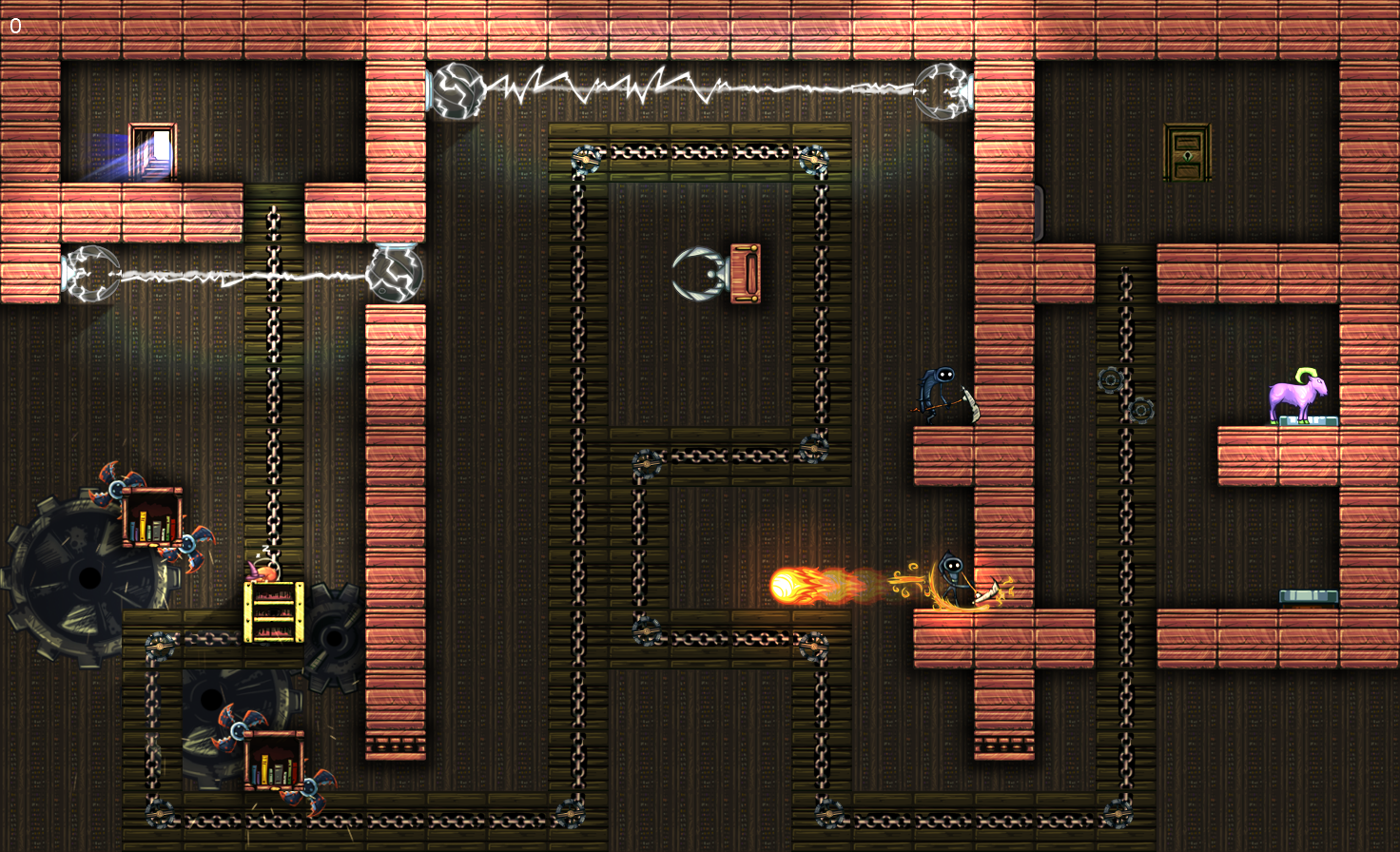
Step 10
"A test run of the level shows its possible to beat."

Step 11
"Time to add lighting and alternate wall tiles for decoration. I also put some large decorative gears near both the switch and the moving blocks. These gears rotate when the blocks move, so it draws the players eyes to the blocks, to show what the switch is affecting."
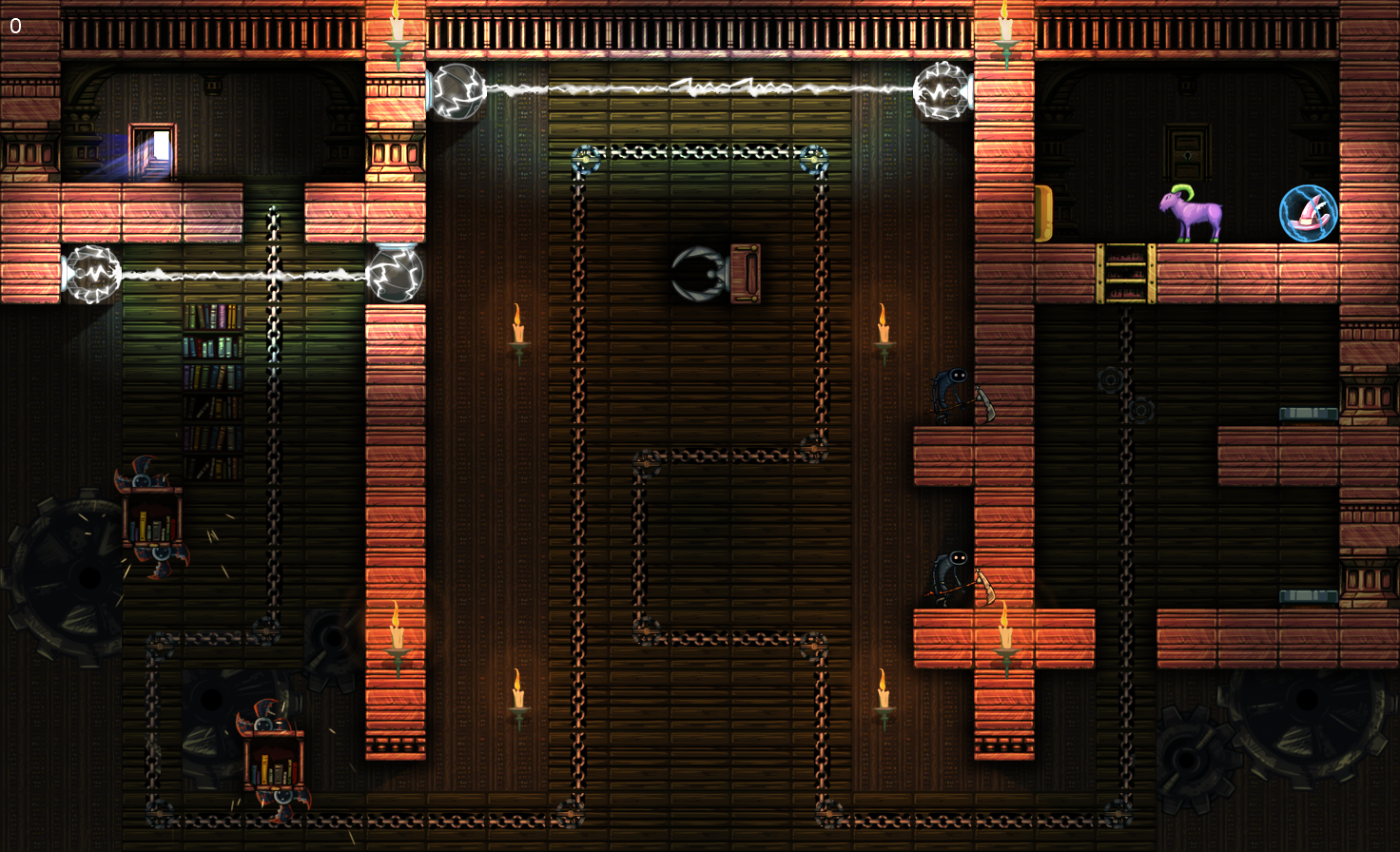
Step 12
"And here's the finished version of the level. I had three friends play this level, and observed how long it took them and what decisions they made. This is my chance to check difficulty level and overall quality of the puzzle. Ultimately, the player needs to feel like they solved the puzzle through some degree of skill, and not through trial and error."
Playtester A: "Not putting mouse on elevator at first, instead trying to send goat. Through platforming skills, could reach the second lightning machine, but that became the end of the line. Beat after about 5 minutes and 10 tries.
Playtester B: "Tries sending mouse along the wall to crawl past the reapers. Eventually makes it, but the lightning machines block the rest of that route. Switched to placing the mouse on the elevator, and got through in about 5 minutes and 10 tries.
Playtester C: "Figured it out on the second try!"
Verdict: "This one turned out great--a good combination of experimentation, logic, and skill in execution."
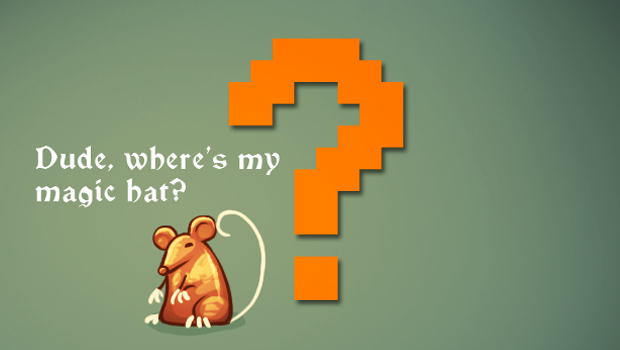
Getting your Goat
Think you have what it takes to craft your very own puzzle? Wondering what other factors come into play? Let us know in the comments--Ian's happy to share more insight, and we'd love to show off more of the iterative process that is puzzle creation.
And if you're looking for examples of how NOT to do it, check out The Top 7... Stupidest Puzzles.

Lucas Sullivan is the former US Managing Editor of GamesRadar+. Lucas spent seven years working for GR, starting as an Associate Editor in 2012 before climbing the ranks. He left us in 2019 to pursue a career path on the other side of the fence, joining 2K Games as a Global Content Manager. Lucas doesn't get to write about games like Borderlands and Mafia anymore, but he does get to help make and market them.


